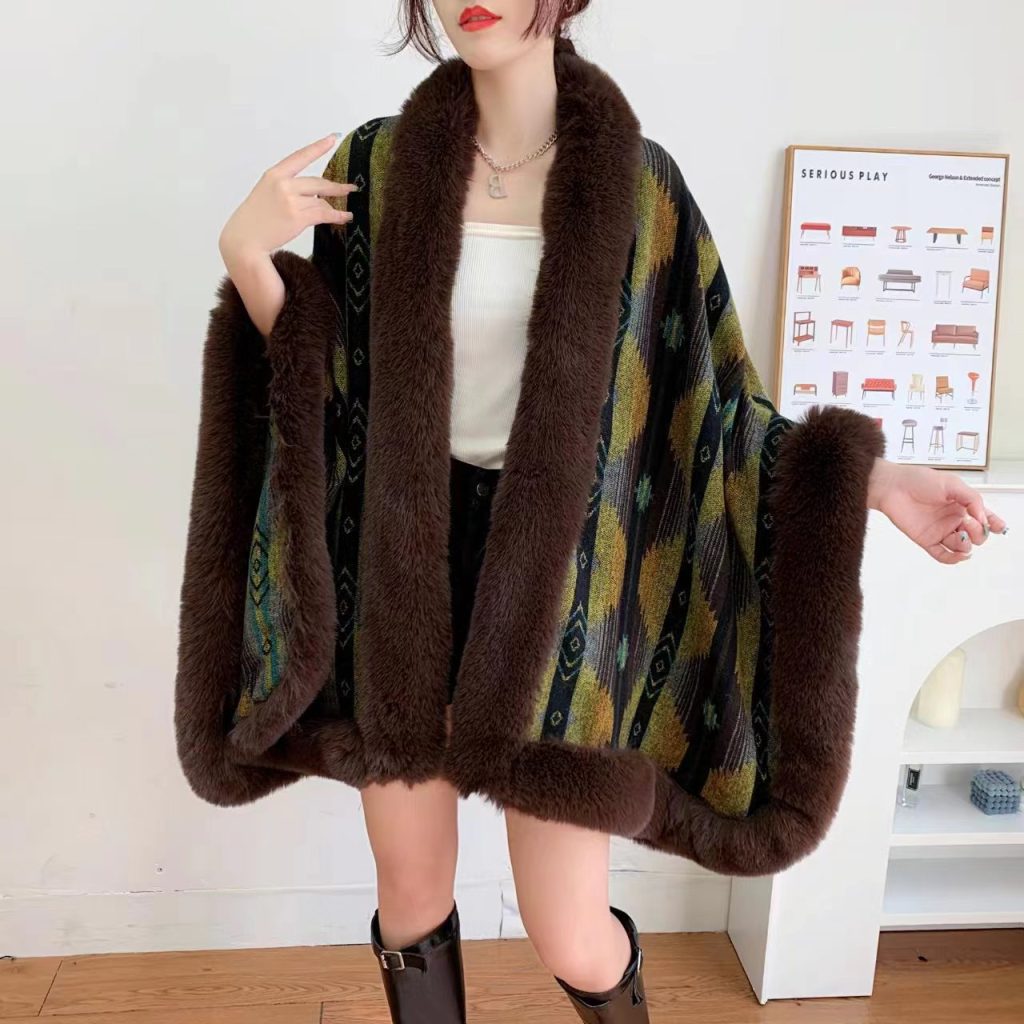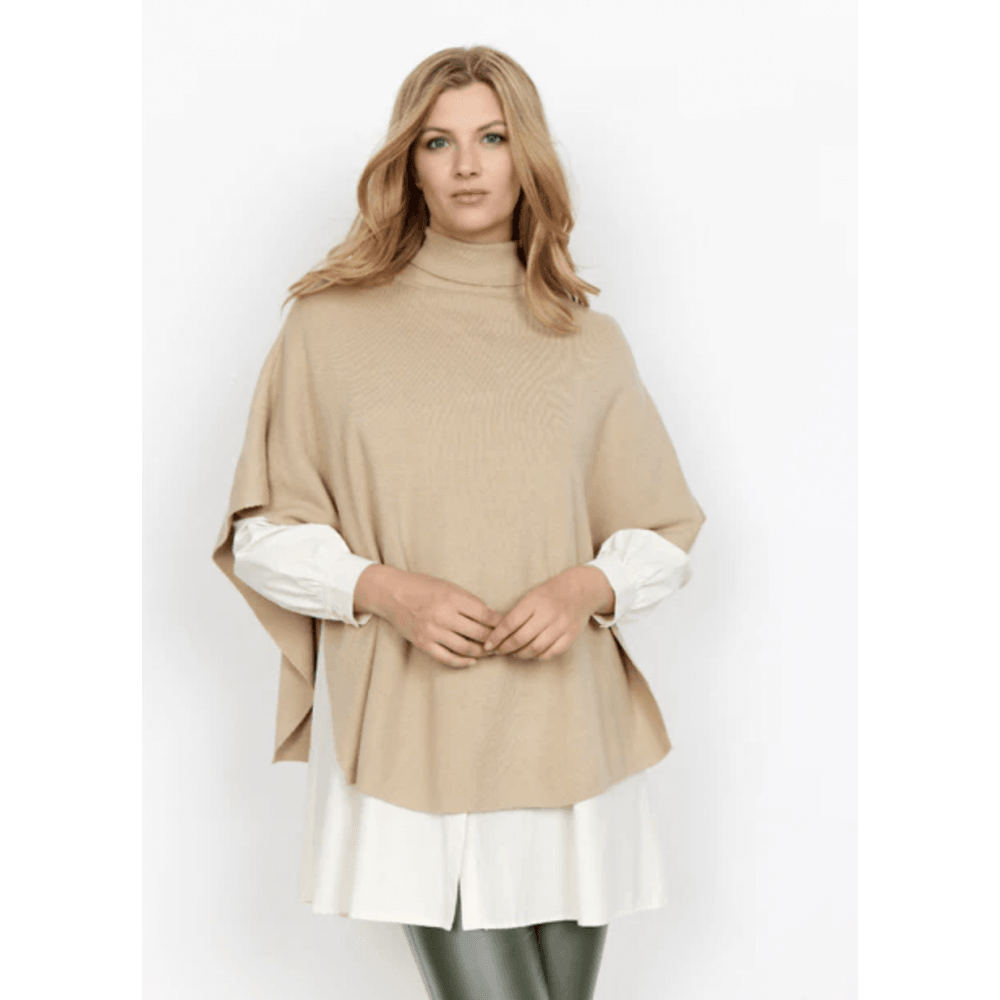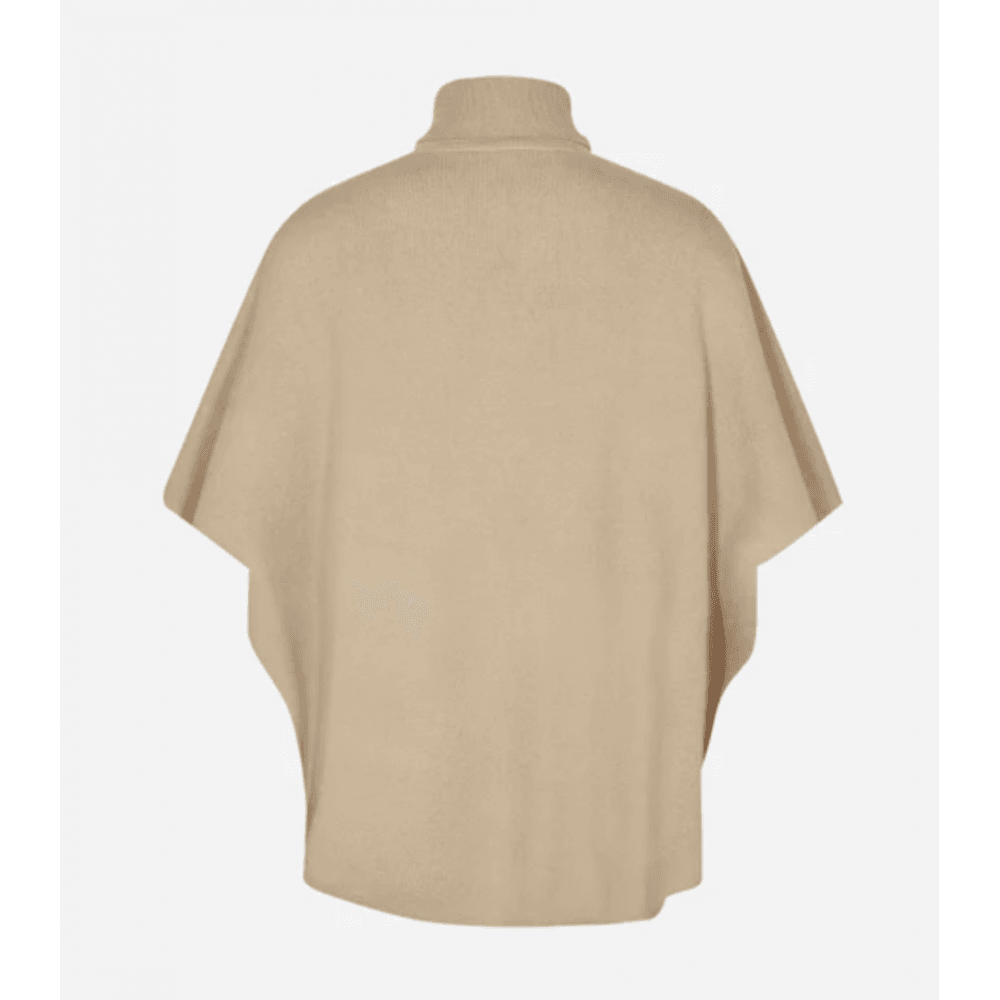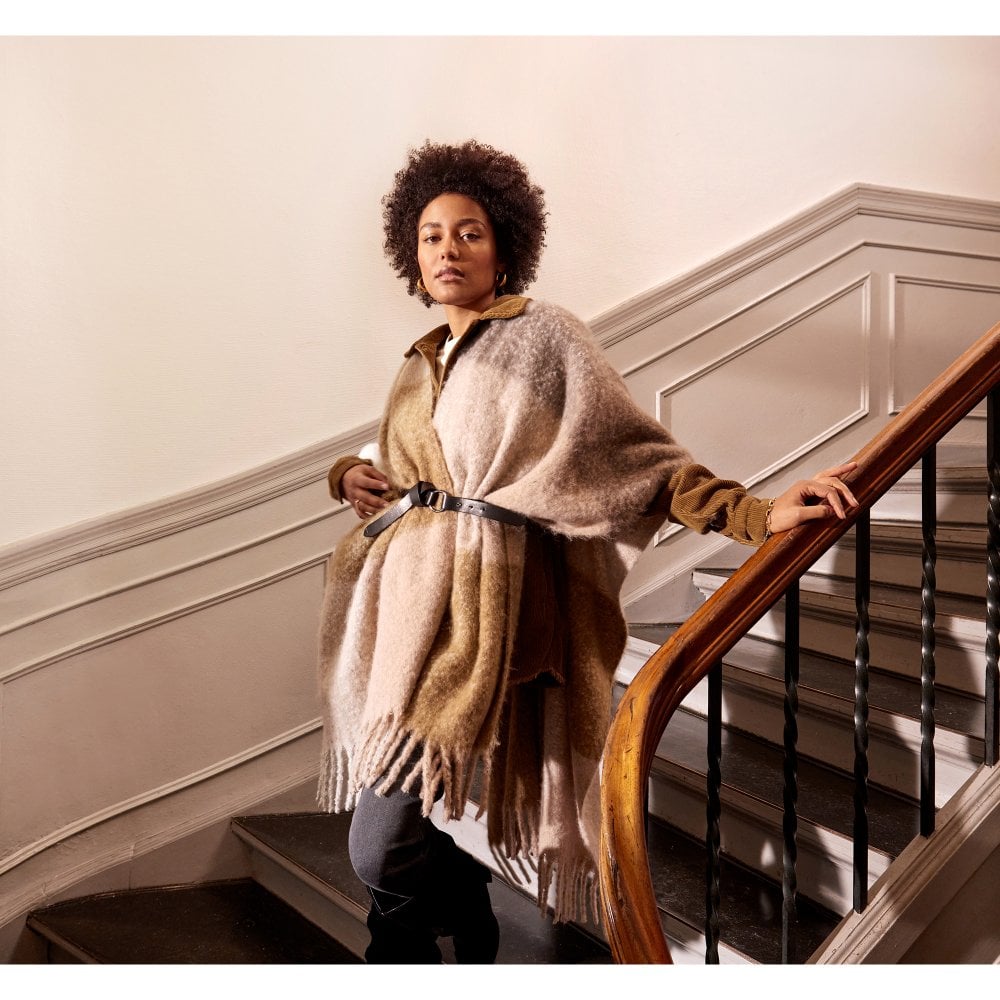Introduction
Poncho definition , a garment steeped in historical and cultural significance, stands as a testament to the blending of tradition and modernity in fashion. This versatile and unassuming piece has evolved from its indigenous origins to become a global fashion icon, gracing runways and streets alike. In exploring the poncho’s definition and its journey through time, we uncover not only its functional brilliance but also its profound impact on cultural expression and sartorial versatility.

Historical Roots and Cultural Significance
Originating in the Americas, particularly in the Andean region of South America, the poncho has a rich history dating back centuries. Initially designed as a practical garment for indigenous peoples to combat the region’s diverse and often harsh weather conditions, it served as a cloak providing warmth, protection from rain, and even camouflage in the environment. Made from materials such as wool or cotton, the poncho’s simplicity in design belied its effectiveness in fulfilling these needs.
Beyond functionality, the poncho became deeply ingrained in cultural identity. Patterns, colors, and weaving techniques often conveyed social status, tribal affiliations, and even spiritual beliefs. Communities expressed their artistic prowess and storytelling through intricate designs woven into the fabric, making each poncho a wearable piece of art that communicated the wearer’s heritage.
Evolution and Modern Interpretation
As cultures intersected and globalization took hold, the poncho transcended its original context, becoming a symbol of cross-cultural exchange. Adopted by various societies worldwide, it underwent transformations to suit different climates, fashion trends, and functionalities. In the mid-20th century, it experienced a resurgence in popularity, embraced by the counterculture movement as a symbol of freedom and individuality.
Today, the modern poncho has diversified significantly in terms of materials, styles, and uses. It can be found in luxurious cashmere for chilly winter days, lightweight cotton for summer festivals, or even waterproof synthetics for outdoor enthusiasts. Designers have reimagined the classic silhouette, introducing asymmetrical cuts, vibrant prints, and embellishments, making it a versatile addition to any wardrobe.
Versatility in Wearability
The poncho’s defining characteristic lies in its simplicity – a single piece of fabric with an opening for the head, often draped over the shoulders and hanging loosely around the body. This simplicity is also its greatest strength, allowing for incredible versatility in styling. It can be dressed up or down, worn as a statement piece over a simple outfit or layered for added warmth and texture.
In casual settings, a poncho paired with jeans and boots offers an effortlessly chic look. For a more formal affair, draping a finely crafted poncho over a dress adds an element of sophistication and drama. Its one-size-fits-most design also promotes inclusivity, making it a garment that can be enjoyed by people of all sizes and shapes.
Cultural Appreciation and Appropriation
As the poncho’s popularity grows, it’s crucial to acknowledge its cultural heritage and respect the communities from which it originates. The line between cultural appreciation and appropriation can be thin, but mindfulness in how we adopt and celebrate such garments is essential. Acknowledging the history and cultural significance of the poncho and supporting indigenous artisans who continue to produce them using traditional methods is a way to honor its roots while enjoying its modern iterations.

Evolution and Global Adoption
As European explorers and settlers encountered indigenous cultures, they recognized the practicality of the poncho and adopted its use. This led to its spread beyond South America, gaining popularity across various regions, including North America, where it became associated with cowboy attire in the American West.
In the 19th and 20th centuries, the poncho continued to evolve stylistically. It became integrated into military uniforms for its utility in inclement weather and later gained traction as a fashionable outerwear option in Western fashion circles. Designers began experimenting with materials, colors, and patterns, further diversifying its appeal.
Modern Interpretations and Styling
Today, the poncho remains a staple in both traditional and contemporary fashion. Its versatility allows it to be worn in various ways, from casual outings to formal events, depending on the material and design. Modern interpretations include lightweight fabrics suitable for layering in mild weather, as well as heavier knits or fleece for warmth in colder climates.
Designers and fashion houses have embraced the poncho’s aesthetic potential, incorporating it into seasonal collections and runway shows. Its simple yet distinctive silhouette offers ample opportunity for creative expression, whether through bold colors, intricate weaves, or minimalist designs that highlight the natural drape of the garment.
Cross-Cultural Influence and Global Appeal
The poncho’s global appeal transcends borders and cultural boundaries. It has been adapted and incorporated into diverse fashion traditions worldwide, from haute couture runways to street fashion in urban centers. Its ability to blend heritage with contemporary trends makes it a sought-after item for fashion-conscious individuals seeking both style and functionality.
In South America, particularly in countries like Peru and Ecuador, traditional ponchos continue to be woven by skilled artisans using age-old techniques, preserving cultural heritage while meeting modern demands. This artisanal craftsmanship adds a layer of authenticity and sustainability to the garment, appealing to consumers increasingly mindful of ethical fashion practices.
Practicality and Eco-Friendliness
From a practical standpoint, the poncho offers several advantages. Its loose fit and wide coverage make it suitable for layering over various outfits, providing warmth without restricting movement. This versatility makes it a practical choice for travelers, outdoor enthusiasts, and anyone seeking a functional yet stylish outer layer.
Furthermore, the poncho’s eco-friendliness aligns with growing consumer preferences for sustainable fashion. When crafted from natural fibers or recycled materials, it embodies principles of environmental responsibility and ethical production practices, appealing to conscientious consumers seeking to minimize their ecological footprint.

Sustainability and Ethical Considerations
In recent years, the fashion industry has seen a growing awareness of sustainability and ethical production practices. The poncho, with its roots in traditional craftsmanship and natural materials, aligns well with this movement. Many contemporary designers and brands are now focusing on creating ponchos using sustainable materials such as organic cotton, recycled fibers, and ethically sourced alpaca or sheep wool.
This emphasis on sustainability not only reduces the environmental impact of production but also supports fair trade practices, ensuring artisans in indigenous communities receive fair compensation for their skills and craftsmanship. By choosing a sustainably made poncho, consumers can contribute positively to preserving traditional methods and supporting the livelihoods of those who have kept this garment’s heritage alive for generations.
From Traditional to High Fashion
The poncho’s journey into high fashion is another testament to its adaptability and universal appeal. High-end fashion houses have reinterpreted the poncho, showcasing it in their collections with luxurious materials, intricate embroidery, and avant-garde designs. These designer pieces often grace the pages of fashion magazines and red carpets, further cementing the poncho’s status as a fashionable and sophisticated item.
Moreover, collaborations between international designers and local artisans have resulted in unique, high-fashion ponchos that celebrate both modern design aesthetics and traditional craftsmanship. These partnerships not only introduce the poncho to new audiences but also elevate the profile of indigenous artisans, acknowledging their expertise and contribution to global fashion.
The Poncho in Pop Culture and Everyday Life
Beyond the fashion runway, the poncho has made notable appearances in pop culture, further embedding it into the collective consciousness. From classic Western films where it symbolized the rugged frontier to modern-day music festivals where it’s a favorite among festival-goers for its practicality and style, the poncho continues to be a cultural icon.
In everyday life, the poncho serves as a practical solution for various weather conditions, outdoor activities, and as a comfortable alternative to structured outerwear. It is a go-to item for travelers, hikers, and anyone seeking a simple yet effective layer of protection or warmth without sacrificing style.
Conclusion
The poncho, once a humble garment born out of necessity, has transformed into a symbol of global fashion versatility, cultural pride, and individual expression. Its journey from the Andean highlands to international runways highlights the enduring appeal of functional design and the power of clothing to transcend boundaries. As we continue to embrace the poncho in our modern wardrobes, we carry forward a piece of history and tradition, celebrating the intersection of culture, fashion, and function in a single, beautifully versatile garment.


